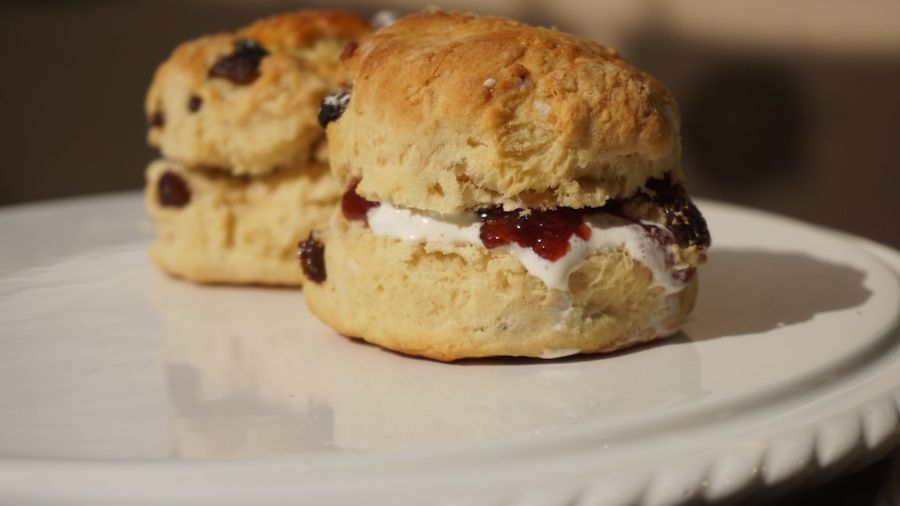· tea parties · 3 min read
Traditional British Scones
Dive into the world of traditional British scones. From types and flavors to etiquette and presentation, we cover what you need to know to host a delightful tea party.

Scones have been an integral part of the quintessential British afternoon tea tradition for centuries. They are often served during the “cream tea” course, which typically follows the sandwiches and precedes the sweet treats.
Here’s all you need to know about traditional British scones for your tea party:
Traditional British scones are typically made with flour, sugar, baking powder, butter, milk, and sometimes eggs.
The dough is mixed until it forms a crumbly texture, then rolled out and cut into rounds or wedges. They are then baked until golden brown and served warm.
Types of Scones
Plain Scones
Plain scones are a timeless favorite. They have a light and fluffy texture with a slightly sweet taste. These scones are delicious on their own or can be topped with clotted cream and jam.
Fruit Scones
Fruit scones are similar to plain scones but with the addition of dried fruit such as raisins or currants. The fruit adds a burst of sweetness and extra texture to the scone. They are typically enjoyed with clotted cream and jam.
Cheese Scones
Cheese scones are a savory twist on the traditional scone. They are made with grated cheese, such as cheddar, added to the dough. These scones are perfect for those who prefer a savory option at their tea party.
Popular Flavors
While plain, fruit, and cheese scones are the most common, there are various flavor variations to explore.
Some popular variations include:
- Chocolate Chip
- Lemon Poppy Seed
- Cranberry-Orange
Scone Accompaniments
Clotted cream and jam are the classic accompaniments to British scones. The scone is split in half, and the cream and jam are spread on each side.
Jam
Strawberry jam is the most popular. However, jams like raspberry, blackberry, or apricot are also popular choices. Some tea enthusiasts even enjoy lemon curd as a tangy alternative to jam.
Clotted Cream
Clotted cream is a thick and rich cream with a velvety texture. It is made by heating unpasteurized milk until the cream rises to the top and forms clots. It has a slightly sweet and nutty flavor and is an essential component of a traditional scone.
Alternative Toppings
Besides clotted cream and jam, you can enhance the flavors of scones with other toppings and spreads. For a touch of luxury, you can drizzle melted chocolate over the scones or sprinkle them with powdered sugar. Lemon zest or orange zest can also be added to the scone dough for a burst of citrus flavor.
Etiquette
When enjoying scones, the British etiquette suggests that they should be split with a knife, rather than broken by hand. Each half is then spread with cream and jam before taking a bite.
Scone Presentation
To create an elegant presentation, serve scones on a tiered stand alongside other tea party treats like sandwiches, pastries, and cakes. You can also garnish the scone tray with fresh berries, mint leaves, or edible flowers for an extra touch of beauty.
Scones are traditionally enjoyed with a pot of freshly brewed black tea, such as Earl Grey or English Breakfast. The robust flavors of the tea complement the sweetness of the scones and create a harmonious pairing.
Scones are a beloved part of British tea culture and make a delightful addition to any tea party. Their simple yet comforting flavors and the ritual of spreading cream and jam create a delightful experience for guests. Gather your loved ones, brew a pot of tea, and indulge in the classic charm of traditional British scones at your next tea party.